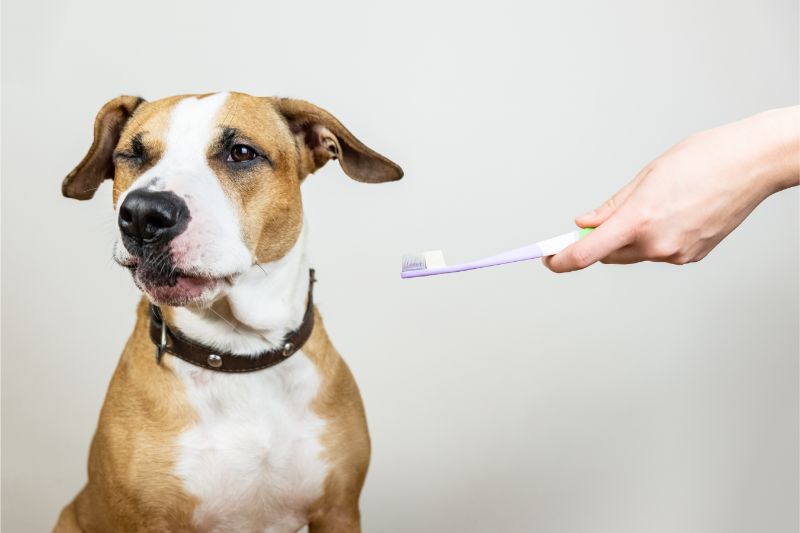
Imagine not brushing your own teeth. Within a day, your mouth would probably feel pretty gross. For most pets, never having their teeth brushed or professionally scaled is a fact of life.
While it can seem frivolous or indulgent to care for a pet’s teeth, the fact is that a large majority of cats and dogs suffer from the effects of periodontal (gum) disease by the time they reach age 3. Caused by poor pet dental care, this irreversible disease is 100% preventable.
Responsible Pet Ownership
Just like regular brushing or nail clipping helps your pet look and feel good, routine dental care can significantly add to their health and happiness. Sure, some pets resist having their teeth brushed. But when approached with patience, consistency and positive reinforcement even the most hesitant pets will eventually tolerate it.
Younger pets are easier to train, so we recommend starting them as easily as possible.
Why It’s So Important
Tartar builds up over time through a process in which plaque (caused by oral bacteria) calcifies. Gingivitis, or gum inflammation, can lead to infection, erosion, tooth decay, and tooth loss. Chewing on hard toys or treats can break teeth, painfully expose nerves, cause infection, and require extraction.
Where to Start
At your pet’s yearly or bi-annual wellness exam, we take a look inside their mouth to assess the condition of teeth and gums:
- Tarter is common on the back molars, and left alone, the gums can eventually recede, making the tooth fall out.
- Infection and damage to the surrounding bone tissue typically follow.
- What’s worse, oral bacteria can seep into the bloodstream where it can damage major organs, like the liver, kidneys, and heart.
Professional Intervention
To protect both pets and vets, animals receive general anesthesia prior to a full dental exam and cleaning. Using special dental tools we’ll remove plaque and tartar from the gum line. We will polish, smooth, apply fluoride, or barrier sealant to further protect the teeth. Because we cannot see the full extent of periodontal disease, we will take digital dental x-rays to see what’s really going one beneath the gum line.
Pet Dental Care at Home
Brushing your pet’s teeth at home is one of the best things you can do to safeguard their long term health. The process helps reduce oral bacteria that can lead to plaque and tartar buildup.
- Using a special pet toothbrush and toothpaste (never human toothpaste, please).
- Start slowly with small circles around the teeth and gum line.
- Once they’re comfortable with the sensation, you can increase the length and frequency of pet dental care at home.
Certain toys, treats, rinses, and chews can reduce oral bacteria. Please let us know if you need help finding the right dental products for your pet.
All Pets Benefit
While a great deal is said about pet dental care for cats and dogs, they aren’t the only pets that benefit from routine attention.
The exotic pets we love can be at risk for painful abscesses caused by misaligned teeth. Guinea pigs and chinchillas are commonly seen for impacted teeth. Luckily, because they require tooth trims, we can stay in front of any developing problems.
If you ever notice the following symptoms of periodontal disease, Shiloh Veterinary Hospital is always here to help address pet dental care:
- Bad breath
- Changes in eating or sleeping habits
- Pain or pawing at the face
- Drooling
- Lethargy/depression
- Eye discharge
- Facial swelling
- Swollen or reddened gums
Please don’t hesitate to contact us for more information, or to schedule an appointment for your pet. We’re always here for you!
